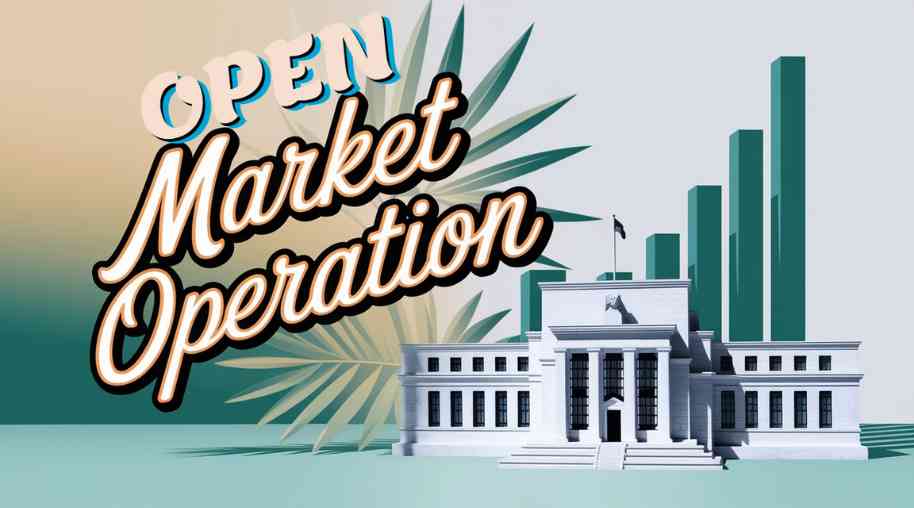OMO Full Form-Open Market Operation
by Shashi Gaherwar
0 1010
Open Market Operation (OMO): Role in Monetary Policy and Economic Stability
Open Market Operation (OMO) is a key monetary policy tool used by central banks worldwide to regulate liquidity, control inflation, and influence interest rates. By buying or selling government securities in the open market, central banks like the Federal Reserve (Fed) and the Reserve Bank of India (RBI) can adjust the money supply to stabilize the economy.

This article explores the concept of OMO, its types, objectives, impact on the economy, and challenges involved in its implementation.
What is Open Market Operation (OMO)?
Open Market Operation (OMO) refers to the buying and selling of government securities by a central bank in the open market to regulate the money supply and liquidity in the banking system. It is an essential tool for implementing monetary policy and ensuring economic stability.
Key Features of OMO:
• Conducted by the Central Bank – Involves direct market transactions to influence liquidity.
• Affects Money Supply – Buying securities injects money into the economy, while selling securities reduces it.
• Influences Interest Rates – Helps in controlling inflation and economic growth.
• Used for Monetary Policy Implementation – Supports expansionary or contractionary policies.
Types of Open Market Operations
OMOs can be classified into two types based on their purpose and duration:
1. Expansionary OMO (Liquidity Injection)
• The central bank buys government securities from commercial banks and investors.
• Increases money supply in the banking system.
• Lowers interest rates, making borrowing cheaper.
• Encourages businesses and consumers to spend and invest.
• Used during economic slowdowns or deflation.
2. Contractionary OMO (Liquidity Absorption)
• The central bank sells government securities to commercial banks and investors.
• Reduces money supply, restricting liquidity in the economy.
• Raises interest rates, making borrowing more expensive.
• Helps in controlling inflation by reducing excessive spending.
• Used when the economy is overheating due to high inflation.
Objectives of Open Market Operations
OMOs are carried out with specific economic and financial objectives:
1. Regulating Liquidity in the Banking System
a. Helps maintain an optimal money supply to support economic growth while avoiding excessive inflation.
2. Controlling Inflation
a. By selling government securities, central banks reduce excess liquidity, which curbs inflationary pressures.
3. Influencing Interest Rates
a. OMOs affect short-term interest rates, impacting borrowing costs for businesses and individuals.
4. Ensuring Financial Stability
a. Central banks use OMOs to prevent liquidity shortages or excesses, ensuring a stable financial environment.
5. Supporting Economic Growth
a. Expansionary OMOs encourage investment and consumption, leading to economic expansion.
How Open Market Operations Work?
The process of OMO involves several key steps:
1. Decision Making: The central bank assesses economic conditions, inflation trends, and liquidity levels.
2. Announcement: The central bank announces OMO operations, specifying the amount and type of securities involved.
3. Market Transactions: The bank buys or sells government securities in the open market.
4. Impact on Banking System: Liquidity levels in the banking sector are adjusted based on transactions.
5. Economic Adjustments: Interest rates, inflation, and credit availability change accordingly.
Example of OMO in Action
• Federal Reserve (USA): During the 2008 financial crisis, the Fed conducted large-scale OMOs, buying government bonds to inject liquidity and stabilize markets.
• Reserve Bank of India (RBI): RBI regularly conducts OMOs to manage rupee liquidity and control inflation in India.
Impact of Open Market Operations on the Economy
OMOs influence various aspects of the economy, including:
1. Interest Rates
• Expansionary OMO reduces interest rates, making loans cheaper.
• Contractionary OMO increases interest rates, making borrowing expensive.
2. Inflation Control
• Selling securities helps absorb excess liquidity, reducing inflationary pressure.
• Buying securities injects liquidity, preventing deflation.
3. Currency Value
• OMO influences exchange rates by impacting money supply and investor confidence.
4. Banking Sector Stability
• Ensures that banks have enough liquidity for lending while preventing excess money flow that could lead to asset bubbles.
Challenges and Limitations of Open Market Operations
Despite its effectiveness, OMO has certain challenges:
1. Limited Effectiveness in Economic Crisis
• During financial crises, banks may not lend even if liquidity is injected, limiting OMO impact.
2. Dependence on Market Response
• The success of OMO depends on how commercial banks and financial markets react to central bank actions.
3. Impact on Bond Yields
• Frequent OMOs can cause volatility in bond yields, affecting investment decisions.
4. Coordination with Other Monetary Tools
• OMOs need to be complemented by other tools like repo rates and cash reserve ratios for optimal results.
Future of Open Market Operations
With evolving financial systems, central banks are adapting OMO strategies. Some key future trends include:
1. Digital Currency and OMO
• The rise of Central Bank Digital Currencies (CBDCs) may alter how OMOs are conducted.
2. Automated and AI-Driven OMO
• Advanced analytics and AI are improving liquidity forecasting and OMO efficiency.
3. Integration with Green Finance
• Some central banks are incorporating sustainable investment strategies into OMO policies.
Open Market Operation (OMO) is a fundamental tool in monetary policy, helping central banks regulate liquidity, control inflation, and influence economic growth. By buying and selling government securities, OMOs impact interest rates, currency stability, and financial markets. While effective, OMO faces challenges, especially during economic crises, requiring a balanced approach alongside other policy measures. As global financial systems evolve, OMOs will continue to adapt to ensure economic stability and sustainable growth.

Share:








Comments
Waiting for your comments